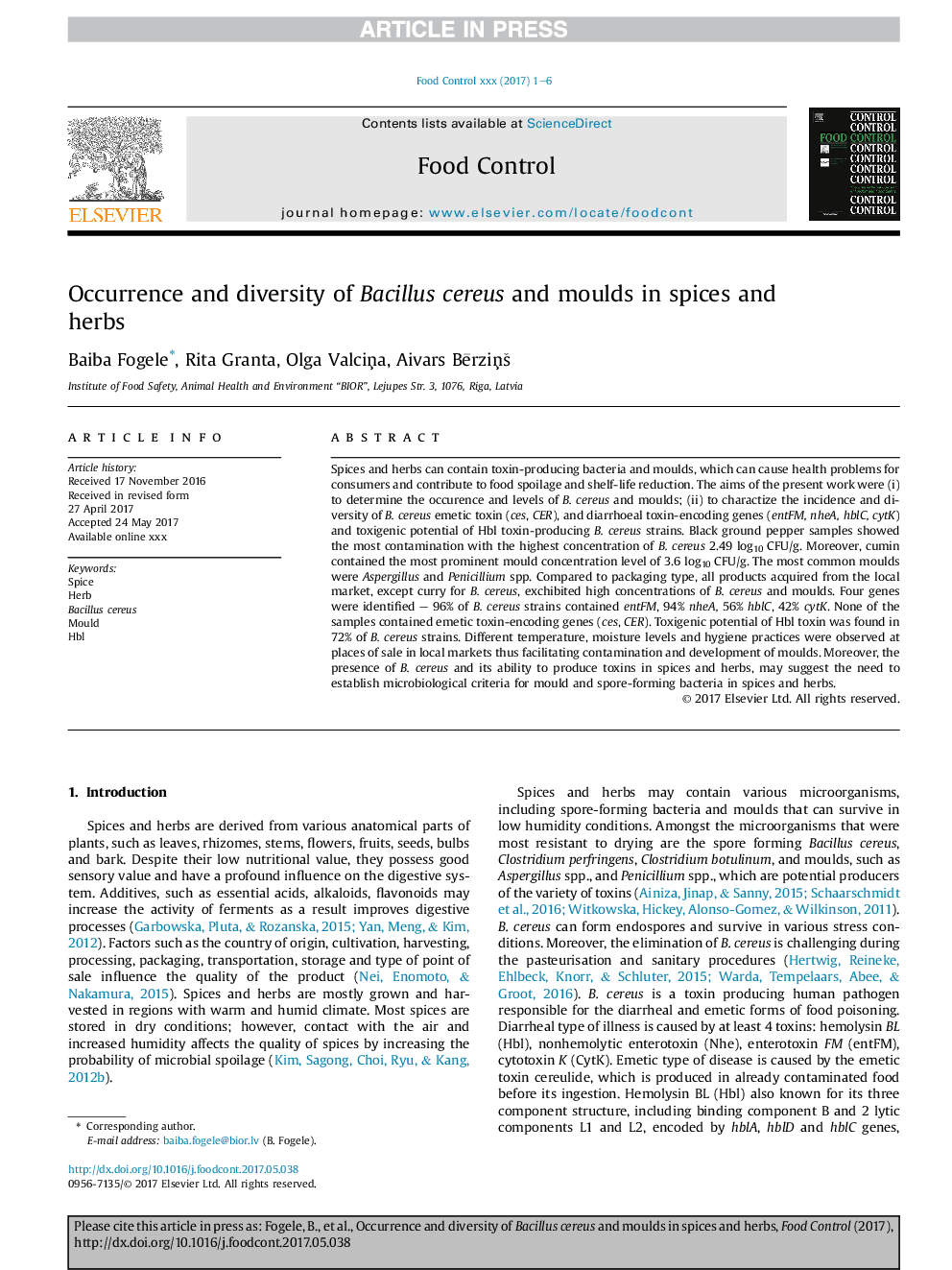| کد مقاله | کد نشریه | سال انتشار | مقاله انگلیسی | نسخه تمام متن |
|---|---|---|---|---|
| 8888294 | 1628381 | 2018 | 6 صفحه PDF | دانلود رایگان |
عنوان انگلیسی مقاله ISI
Occurrence and diversity of Bacillus cereus and moulds in spices and herbs
ترجمه فارسی عنوان
ظهور و تنوع باسیلوس سرئوس و قالب در ادویه جات و
دانلود مقاله + سفارش ترجمه
دانلود مقاله ISI انگلیسی
رایگان برای ایرانیان
موضوعات مرتبط
علوم زیستی و بیوفناوری
علوم کشاورزی و بیولوژیک
دانش تغذیه
چکیده انگلیسی
Spices and herbs can contain toxin-producing bacteria and moulds, which can cause health problems for consumers and contribute to food spoilage and shelf-life reduction. The aims of the present work were (i) to determine the occurence and levels of B. cereus and moulds; (ii) to charactize the incidence and diversity of B. cereus emetic toxin (ces, CER), and diarrhoeal toxin-encoding genes (entFM, nheA, hblC, cytK) and toxigenic potential of Hbl toxin-producing B. cereus strains. Black ground pepper samples showed the most contamination with the highest concentration of B. cereus 2.49 log10 CFU/g. Moreover, cumin contained the most prominent mould concentration level of 3.6 log10 CFU/g. The most common moulds were Aspergillus and Penicillium spp. Compared to packaging type, all products acquired from the local market, except curry for B. cereus, exchibited high concentrations of B. cereus and moulds. Four genes were identified - 96% of B. cereus strains contained entFM, 94% nheA, 56% hblC, 42% cytK. None of the samples contained emetic toxin-encoding genes (ces, CER). Toxigenic potential of Hbl toxin was found in 72% of B. cereus strains. Different temperature, moisture levels and hygiene practices were observed at places of sale in local markets thus facilitating contamination and development of moulds. Moreover, the presence of B. cereus and its ability to produce toxins in spices and herbs, may suggest the need to establish microbiological criteria for mould and spore-forming bacteria in spices and herbs.
ناشر
Database: Elsevier - ScienceDirect (ساینس دایرکت)
Journal: Food Control - Volume 83, January 2018, Pages 69-74
Journal: Food Control - Volume 83, January 2018, Pages 69-74
نویسندگان
Baiba Fogele, Rita Granta, Olga ValciÅa, Aivars BÄrziÅÅ¡,
